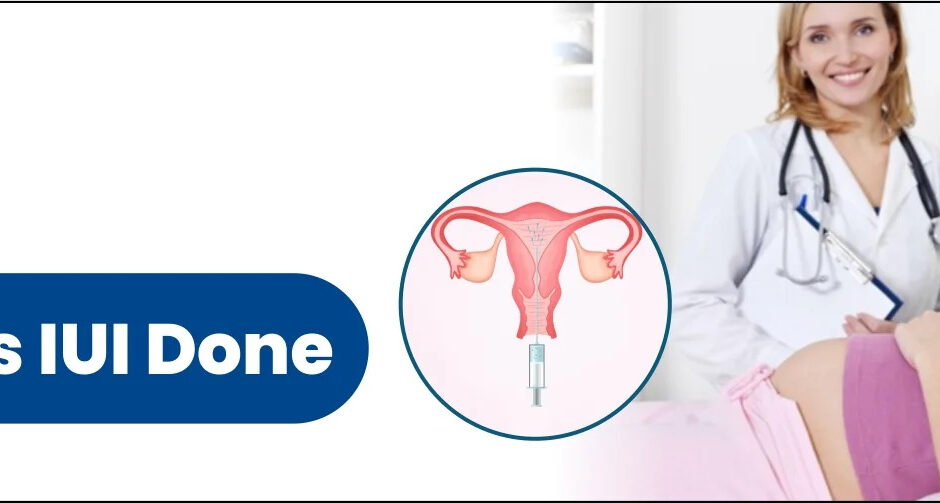Infertility is a challenge that affects millions of couples worldwide, leading to emotional and physical stress. While modern medicine offers various treatments, one of the most widely used and minimally invasive methods is Intrauterine Insemination (IUI). This procedure has been a beacon of hope for many individuals and couples striving to conceive. But when exactly is IUI done, and how can it benefit you? This blog explores the indications, timing, and considerations surrounding IUI, helping you make informed decisions about your fertility journey.
What is IUI?
Intrauterine insemination (IUI) is a fertility treatment that involves placing prepared sperm directly into a woman’s uterus during her ovulation period. This procedure is designed to increase the chances of sperm reaching the egg, thus enhancing the likelihood of fertilization.
The sperm used in IUI is processed to concentrate healthy, motile sperm and eliminate seminal fluid and debris, ensuring the best chances for conception.
When is IUI Done?
1. Unexplained Infertility
Unexplained infertility occurs when standard tests fail to identify a specific cause of infertility in a couple. In such cases, IUI is often a first-line treatment because it bypasses potential obstacles and gives sperm a better chance of meeting the egg.
2. Mild Male Factor Infertility
IUI can be beneficial when male infertility issues like low sperm count or poor motility are present but not severe. By concentrating healthy sperm and placing them closer to the egg, IUI helps overcome these challenges.
3. Cervical Factor Infertility
Some women face infertility due to cervical mucus issues, such as:
- Hostile cervical mucus: Thick or acidic mucus can hinder sperm movement.
- Cervical scarring: Scar tissue may block sperm entry into the uterus.
IUI bypasses the cervix altogether, delivering sperm directly into the uterus and overcoming these barriers.
4. Ovulatory Disorders
For women with irregular ovulation or conditions like polycystic ovary syndrome (PCOS), IUI combined with ovulation induction medications (like Clomiphene citrate or Gonadotropins) can optimize the timing of insemination to align with egg release.
5. Use of Donor Sperm
When male infertility is severe or in cases of single women or same-sex female couples seeking to conceive, donor sperm can be used in IUI. The procedure ensures precise and effective placement of the donor sperm.
6. Mild Endometriosis
Endometriosis, a condition where tissue similar to the uterine lining grows outside the uterus, can affect fertility. In cases of mild endometriosis, IUI can improve the chances of conception when paired with ovulation-inducing medications.
7. Sexual Dysfunction
IUI is a practical solution for couples facing sexual difficulties, such as:
- Erectile dysfunction
- Premature ejaculation
- Vaginismus (painful intercourse)
It bypasses the need for intercourse, directly facilitating fertilization.
The Ideal Timing for IUI
Timing is critical in IUI to ensure the sperm meets the egg during ovulation. Here’s how the timing is typically determined:
1. Monitoring Ovulation
Doctors use several methods to monitor ovulation:
- Ultrasound scans: To track follicular development in the ovaries.
- Hormonal blood tests: To check luteinizing hormone (LH) levels, which surge before ovulation.
- Home ovulation kits: To detect the LH surge.
2. Ovulation Induction
If natural ovulation is irregular or unpredictable, medications like Clomiphene citrate or Gonadotropins may be prescribed to stimulate ovulation. These drugs ensure the release of one or more eggs, increasing the chances of successful insemination.
3. Scheduling the IUI Procedure
The IUI procedure is typically performed:
- 12-36 hours after the LH surge, detected via ovulation kits or blood tests.
- 24-48 hours after a trigger shot (human chorionic gonadotropin or hCG), used to induce ovulation artificially.
The IUI Process
The IUI procedure is straightforward and involves the following steps:
1. Sperm Preparation
The male partner provides a semen sample, which is then “washed” in a lab to concentrate healthy, motile sperm and remove impurities.
2. Insemination
The doctor uses a thin, flexible catheter to place the processed sperm directly into the uterus. The process is quick, painless, and often takes just a few minutes.
3. Post-Procedure Care
After the procedure, you may be advised to rest for a short while. Normal activities can usually be resumed within a day.
Success Rates of IUI
The success rates of IUI depend on several factors, including:
- Age: Women under 35 generally have higher success rates.
- Cause of Infertility: IUI is most effective for unexplained infertility or mild male factor infertility.
- Number of Cycles: Success rates improve over multiple cycles, with many couples achieving pregnancy within 3-6 attempts.
On average:
- 10-20% per cycle for younger women with no severe fertility issues.
- Lower success rates for women over 40 or with severe infertility conditions.
When is IUI Not Recommended?
While IUI is beneficial in many scenarios, it is not suitable for:
- Severe male infertility (extremely low sperm count or motility).
- Blocked or damaged fallopian tubes.
- Severe endometriosis.
- Women with advanced age and diminished ovarian reserve.
In these cases, in vitro fertilization (IVF) may be a better option.
Risks and Considerations
IUI is a low-risk procedure, but some potential concerns include:
- Multiple pregnancies: Especially when combined with ovulation-inducing medications.
- Mild discomfort: During or after the procedure.
- Infection: Rare, but possible if proper hygiene is not maintained.
Preparing for IUI
1. Health Optimization
Before starting IUI, both partners should focus on improving overall health:
- Maintain a healthy weight.
- Avoid smoking, alcohol, and excessive caffeine.
- Manage stress through relaxation techniques.
2. Fertility Assessments
Your doctor may recommend tests such as:
- Hormonal evaluations.
- Ultrasound scans.
- Semen analysis.
3. Understanding Costs
IUI is more affordable than IVF but still involves costs for procedures, medications, and monitoring. Ensure you discuss financial aspects with your healthcare provider.
Conclusion
Intrauterine insemination (IUI) is a versatile and minimally invasive fertility treatment that can address various infertility issues. Its success depends on proper timing, thorough evaluations, and addressing any underlying health concerns. While IUI offers hope to many, it’s essential to consult with a fertility specialist to determine if it’s the right path for you.
Embarking on a fertility journey can be overwhelming, but with the right support and guidance, you can take confident steps toward achieving your dream of parenthood. If you’re considering IUI, schedule a consultation with a trusted fertility expert to explore your options and start your journey today!



